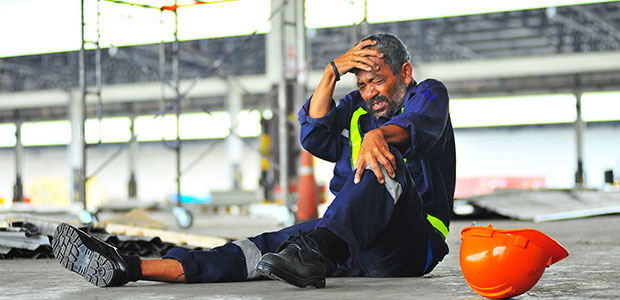
You Have the Power to Prevent Workplace Injuries
Fall-related injuries and deaths take the number two spot for workplace hazards. But even though they’re common, they’re also preventable. Learn how to best keep your workers safe.
- By Lauren Holman
- Feb 12, 2020
According to the National Safety Council, 697 workers died in 2016 from suffering a multi-level fall, and 48,060 workers obtained injuries serious enough to require days off work. Although transportation- related deaths are the most common cause of fatality in the US workplace, fall-related deaths take the second spot, according to the US Bureau of Labor Statistics. In fact, fall injuries account for nearly $70 billion in worker’s compensation and medical bills each year in the United States.
The National Safety Council gathered some data in 2016 to determine which industries’ workers are at the highest risk of fall-related injuries. They found that construction and manufacturing sectors were responsible for the greatest number of injuries and deaths, with transportation and warehousing companies also claiming a large portion of injuries. However, workers across all industries are at risk of slips, trips, and falls. Read Scatterling’s list of the top workplace safety hazards in the US.
It is important to keep in mind that a worker doesn’t have to fall from a great height for the accident to be serious. Falls can happen anywhere, anytime, in any workplace environment. Furthermore, falls are completely avoidable if the correct safety measures and practices are in place. This article will cover fall safety in the workplace, as well as how to reduce your workers’ risk of a fall-related workplace injury.
Common Workplace Fall Hazards
Minor slips, trips, and falls can happen anywhere and can result in very minor or very serious injuries. A few culprits that increase the risk of your workers suffering a trip on the job include insufficient lighting, hidden or misplaced cords, uneven floor coverings and surfaces, wet or slippery flooring, and pathway obstacles such as poorly placed benches or chairs.
In addition to these slip-and-trip hazards, stairs and ladders can pose significant fall hazards in the workplace. A more recent phenomenon is distracted walking. It is not uncommon to see people walking and without paying attention to where they are going, but instead keeping their eyes glued to their phones. Although distracted walking is not dangerous most of the time, it has the potential to be deadly depending on the environment that the employee is operating in. Being unaware of your surroundings, or having limited visibility, will only magnify existing safety hazards that are present in the workplace.
Preventing Fall-Related Injuries
Controlling the number of instances where fall-related injuries may happen in your workplace comes down to conducting regular risk assessments and taking the necessary steps to eliminate or reduce all hazards identified.
The easiest place to start is with slip and trip hazards. Mitigating your workers’ risk of suffering a slip, trip, or fall often comes down to proper housekeeping. This means making sure that all cords and cables are properly secured and not in the way of regular foot traffic, cleaning up after every spill to ensure surfaces are always dry and free of moisture or grease, and ensuring that the lighting in your establishment is working properly and that there are no poorly lit areas where workers are required to perform tasks. It also means that you need to make sure that all uneven flooring surfaces are well- marked and made known to all staff members. Lastly, employees and employers alike are responsible for clearing paths and walkways of any obstacles that could pose a tripping hazard.
In addition to eliminating hazards, it is important to accommodate more dangerous work requirements as well. This means strict enforcement of proper fall protection gear if a worker is required to work at dangerous heights. Footwear is also important. Workers should make sure that they are wearing the appropriate footwear for the task at hand. Waterproof, non-slip footwear may be beneficial for certain jobs. Lastly, appropriate training on ladder safety is essential for workers who regularly use ladders to perform their jobs.
Lone workers in the US
Wearing the proper PP&E is important, but sometimes a hard hat isn’t enough. This is especially true if an employee is working alone or in a remote location. If a lone worker suffers a fall and no one is around, then no one in your organization will know that they are hurt and the victim will not get the help they need. Using a lone worker monitoring device is one way to ensure the safety of your people through regular check-ins, motion sensors, and proactive monitoring.
One of the Largest Causes of Workplace Injury
Slips, trips, and falls are preventable if the proper safety measures and procedures are put in place. Yet, they are still one of the largest causes of workplace injury and death in the US. Be sure to keep these protocols in mind as you perform your day-to-day tasks. Ensuring that everyone in your organization is aware of the risks and mitigation methods is critical. The more people are educated on how to avoid fall-related workplace injuries, the safer your workplace environment will be for everyone.
Is your organization doing everything it can to mitigate its people’s risk?